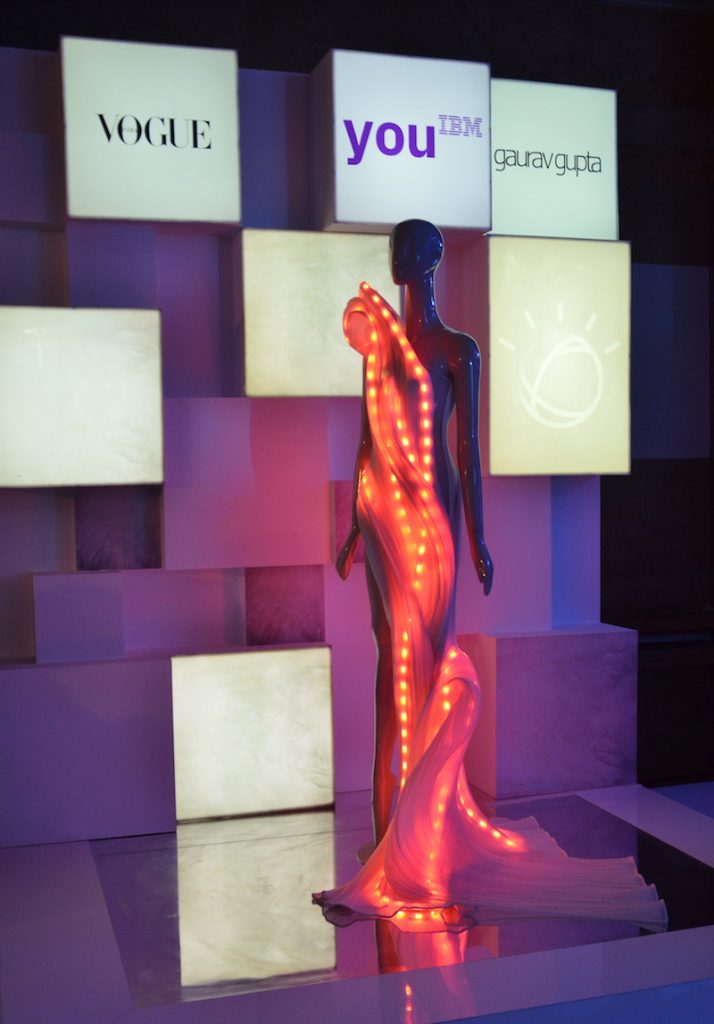The integration of technology and creativity is inevitable. The possibilities are stunning – both literally and figuratively.
When you think technology, creating art isn’t exactly the first thing that comes to mind. That looks all set to change with these two seemingly disparate fields coming together to create something extraordinary. In fact, with emerging mediums such as virtual reality and artificial intelligence (AI), creative fields are embracing the use of intelligent systems to create immersive art experiences. More often than not, the results are astounding.

Reimagining the extraordinary
The evolution of AI has pushed the boundaries of creativity and sensory experiences. Not only can it predict trends and answer customer queries, AI also inspires visual and aural senses by understanding and providing an interpretation of millions of data sets. In that context, IBM’s Watson is a smart technology that gives artists an opportunity to implement AI and create real-life intelligent masterpieces.
Some artists have already seen what AI is capable of. Gaurav Gupta and Falguni & Shane Peacock (FSP), two strong voices in India’s fashion and haute couture circuit believe that intelligent technology will heavily influence the future of fashion. They recently collaborated with IBM India to give the world a glimpse into the creative potential of AI.

The designer duo teamed up with Watson to reimagine fashion – the result was India’s first AI-inspired Western fashion collection. At the same time, couturier Gaurav Gupta worked with Watson’s Personality Insights API and IoT integration to bring to life the first AI-inspired saree gown.

Watson was tasked with going through almost 600,000 images of design and fashion data from across the world to analyse and understand a spectrum of shapes, colours and patterns. Based on this analysis, it matched styles and silhouettes and even generated unique patterns for the designers. This, in turn, helped the designers better understand their customers and find new ways to engage with them and incorporate the trends that Watson predicted were likely to dominate the upcoming fashion cycle. These APIs also provided insights into how designers could approach sustainable fashion. The designers, freed from the limitations of traditional tools, were thus able to create a new type of immersive experience.

It also saved them a huge amount of time and effort. For instance, Gaurav Gupta’s team, which usually takes days of manually going through data to figure out the next trend, can now finish the task in less than two minutes!
Watch IBM’s Watson and Gaurav Gupta join hands to create some AI-fashion magic.
Different facets of AI
IBM’s Watson is the kind of technology that can be used in almost every industry. Take customer service for instance. Here, Watson’s Personality Insights API creates a detailed personality portrait, understands customer preferences and generates insights that can help brands tailor the end-user experience. Another Watson API, Visual Recognition, can be used by businesses to manage and enhance their online reputation. Companies like iTrend, a technical tool for stock market analysis and trading, manage their online reputation by using Watson’s Visual Recognition and other APIs, which gives them actionable insights from unstructured data.
The digital era is rewriting the rules of engagement with customers across segments. Customers are no longer looking for just ‘products’ or ‘services’, but for actual experiences. This is where IBM’s Watson drives home a point. The system allows for the creative application of technology – catering to the individual and delivering a more personal experience even though it’s meant for the masses.
Creativity and artistic expression have been considered exclusive to human intelligence, but the evolution of AI is proving otherwise. This technology is paving the way for some significant changes in the way we live. And it is only a matter of time before it becomes a part of our everyday life.
Source: The art in Artificial Intelligence: A gateway between technology and creativity













